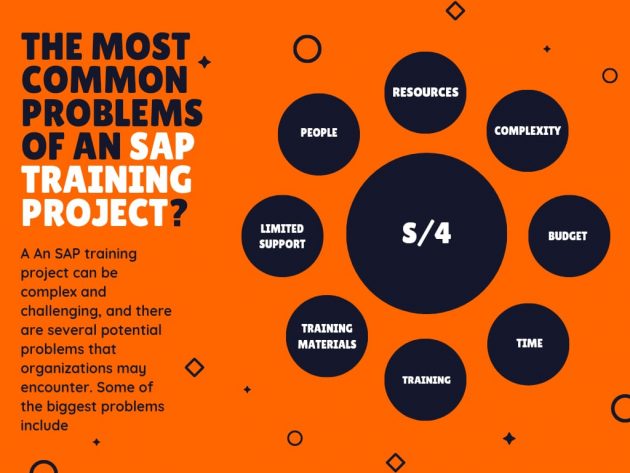
An SAP training project can be complex and challenging, and there are several potential problems that organizations may encounter. Some of the biggest problems include:
Lack of engagement: Without the proper level of engagement from employees, it can be difficult to ensure that they are retaining the information and putting it into practice. This can lead to a lack of adoption and a lack of return on investment (ROI) for the training project.
Limited resources: SAP training can be expensive and time-consuming, and many organizations may not have the resources to devote to it. This can lead to a lack of funding or manpower to implement the training.
Complexity of the software: SAP can be a complex and challenging system to learn, and some employees may struggle to understand it. This can lead to frustration and a lack of motivation to use the system.
Limited budget: SAP training can be expensive, and many organizations may not have the budget to devote to it. This can lead to a lack of funding or manpower to implement the training.
Limited time: SAP training can be time-consuming, and many organizations may not have the time to devote to it. This can lead to a lack of funding or manpower to implement the training.
Limited scope of the training: SAP training may not cover all the features and functionalities the employees need to work on their daily tasks, this can cause a lack of effectiveness and efficiency in the usage of the software.
Limited training materials: The company may not have enough training materials to provide to their employees, this can limit the learning process and make it harder for employees to understand the software.
Limited support: The lack of a dedicated support team for SAP training can make it difficult for employees to get the help they need when they need it, this can lead to frustration and a lack of motivation to use the system.
conclusion, there are several potential problems that organizations may encounter when implementing an SAP training project. These include lack of engagement, limited resources, complexity of the software, limited budget and time, limited scope of the training, limited training materials and limited support. By identifying and addressing these problems early on, organizations can increase the chances of success for their SAP training project.
